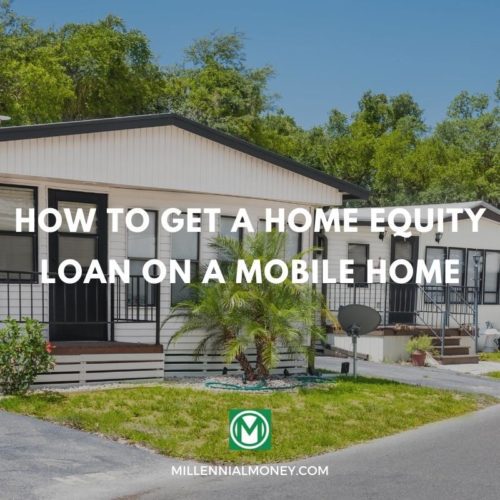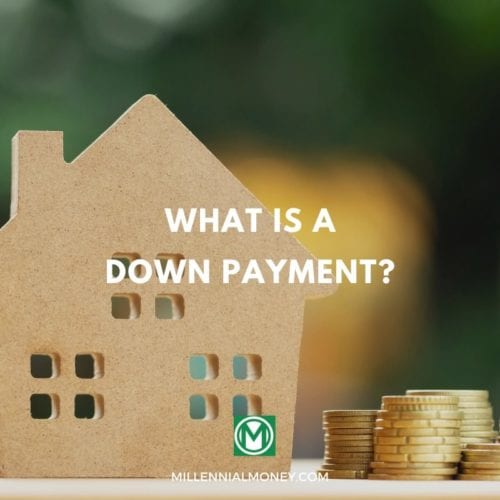If you’ve been renting or living with your parents for a while, you’ve probably found yourself wondering when you’ll take the next step: buying a house of your own. Maybe you’ve started browsing property sites already in the search for your dream house.
But as soon as you start to look into the technical details of buying a house, things can quickly become confusing. There’s a lot of technical jargon that property sites will assume you now.
Above all, what actually is a mortgage? It can seem like a silly thing to ask, but many people have misconceptions or misunderstandings regarding the topic.
It’s essential to make sure you know the ins and outs of mortgages before you go any further in your property hunt.
What Is A Mortgage?
A mortgage is a property loan that takes the form of a legal agreement between the lender and the borrower.
A mortgage is a type of loan – but all loans aren’t necessarily a mortgage. You can take out other types of loans, for example, a personal loan or an auto loan, but a mortgage is used to borrow money for real estate.
How Does a Mortgage Work?
The lender (typically a bank or mortgage broker) gives money to the borrower to use towards a property, in return for receiving monthly repayments towards the initial loan amount plus interest. If the borrower can’t uphold the agreement, the property serves as the collateral, and the lender has a right to take it through foreclosure.
Because taking a mortgage means taking out a legal obligation, you might sign a document that acts as a contract and file it in the county records as a claim against the home. You’ll also sign a promissory note, which promises you’ll pay back the loan amount plus interest.
Types of Mortgages
There are many types of mortgages available, some of which are for very specific purposes and others that are more common and used in a variety of situations.
Purchase Loans vs. Mortgage Refinancing
The simplest types of mortgages are purchase loans and refinance loans.
Purchase loans are the type of mortgage you’d typically think of – those who want to buy a house and need a loan to do so. On the other hand, refinance loans are for those who already have a home and mortgage but want a different, better deal. Refinance loans are typically used if a customer buys a fixed-rate mortgage and then interest rates drop dramatically.
Then there’s a jumbo loan, which works in almost the same way as a purchase loan but is for a bigger amount and a lower down payment. Basically, it’s an extreme type of mortgage suitable for those who want to buy their dream home straight away.
Government-Backed Mortgage Loans
You’ll also come across government-backed loans – the FHA, the VA, and the USDA (US Department of Agriculture Rural Development). These are all fairly common but can only be used by specific groups of people or for specific circumstances. The FHA (Federal Housing Administration) is for buyers in lower-income households who would typically struggle to get a loan due to their credit history or the size of their down payment. Requirements go right down to a credit score of 500 and a down payment of 3.5%, although it comes at the price of higher mortgage insurance.
A VA (Veterans Affairs) loan is for people currently serving in the military or who have served in the past; they involve no down payment or mortgage insurance. A USDA mortgage is for those who want to use their mortgage to purchase a property in the countryside and requires no down payment but mortgage insurance premiums.
Second Mortgages
Then there are some more unusual mortgage types. A home equity loan and home equity line of credit are both used for second mortgages – yes, you can take out two mortgages on the same property. This might not sound very intuitive at first, but it’s a good way to access the value of your house if it’s appreciated over time instead of losing money by taking out a different type of loan.
A balloon mortgage is when the payments will start low but gradually increase over time, making them an excellent choice for those who expect their income to increase over time.
Reverse Mortgages
There’s even a reverse loan, for people over the age of 62 who want to get some value out of their house. This can be used by people who need more money for their retirement or who want to help out other family members.
How To Qualify for a Mortgage
The types of loans available aren’t the only factor you need to consider when it comes to mortgages.
When it comes to qualifying for a loan, two of the most important aspects are the value of the down payment you can afford (the percentage of the loan you pay upfront) and your credit history. The bigger the down payment you can make and the better your credit history, the more favorable the terms of your mortgage are likely to be.
Typically, a loan requires a credit score of 620 or higher and a down payment worth 20% of the loan or more.
Mortgage Prequalification
If you’re not sure if you’ll qualify for a loan and are worried about it negatively impacting your credit score, you could seek prequalification first. This will give you an idea of whether you’re likely to get pre-approved without it harming your credit score – instead of examining your credit history fully, a prequalification normally consists of a few basic questions about the state of your finances.
To boost your chances of pre-approval as much as possible, ensure your financial data is as good as it can be. It’s not only credit scores that carry weight, but also your debt-to-income ratio. Aim to keep yours below 43%.
Mortgage Payments
A mortgage requires you to pay back the loan amount plus interest, so a key part of a mortgage is the rate itself and the structure it takes. An important consideration is whether to take a fixed or adjustable-rate mortgage.
Adjustable-Rate vs. Fixed-Rate Mortgages
As you can probably guess, a fixed-rate mortgage features an interest rate that remains the same for the entirety of the mortgage, whilst an adjustable-rate mortgage has a mortgage that will change throughout the term of the loan.
Adjustable-rate loans are also called ARMs – for instance, a 5/1 ARM has an interest rate that remains the same for 5 years then may change. The most popular fixed-rate mortgages are the 30-year and 15-year fixed-rate mortgages, although they could be for shorter or longer periods.
Mortgage Calculators
Another idea is to use a mortgage calculator, which will tell you the monthly payments you can expect and the total cost of interest over the entire term of your loan.
Mortgage Amortization
Everything that’s left after the down payment and the payments toward the full loan amount is known as the principal. Therefore, over time your principal will reduce as long as you’re making your payments.
Amortization describes the process of making payments toward your principal, and they’re almost always taken on a monthly basis.
Property Tax Escrow
Another thing you’ll have to consider is property taxes. Generally, the lender collects them with your mortgage and pays the taxes for you. In the period between collection and paying the tax, they’ll store them in what’s called an escrow account.
Do You Need Mortgage Insurance?
Finally, some mortgages come with a requirement to pay insurance. This could either be private mortgage insurance (PMI) or a specific type of insurance for government-backed loans.
Mortgage Insurance vs. Home Insurance
But mortgage insurance isn’t to be confused with home insurance – the latter protects your home in case it’s destroyed or damaged, while the former protects the lender from you defaulting. Nonetheless, some mortgage lenders put it as a requirement since the lender will also suffer if the house is damaged – they’ll lose their collateral. Both types of insurance are likely to be collected by the lender along with your mortgage payment.
You can see how the unexpected costs involved in taking out a mortgage can quickly add up. What at first can seem like a no-brainer soon appears more daunting – and don’t forget other costs that might come up, like house repairs or renovation. Still, it’s worth it if a mortgage is right for you. More on that later!
How To Take Out a Mortgage
So, you now know what a mortgage is. But there are still a few key questions – especially how to shop for a mortgage.
First, the who.
Choosing A Mortgage Lender
In the past, mortgages were always given out by banks, but this is no longer the case – many non-banks are now offering mortgage programs. Amongst these top mortgage lenders are online lending platforms such as:
- Rocket Mortgage by Quicken
- LoanDepot
- SoFi
- Credible
In contrast, traditional lenders are household names like JPMorgan Chase and Wells Fargo, although some banks in this category are now launching digital mortgages too.
If you’re a low-income borrower who can’t afford a large down payment, you should probably look for a lender that offers an FHA loan, or at least has a program that offers especially low down payments – some providers are prepared to go as low as 5% or even 3%. Conversely, if you’re looking for a second mortgage, not many providers offer this, so you’re already quite restricted.
The mortgage process varies depending on the lender. Traditional banks require you to discuss the mortgage with a representative in a brick-and-mortar institution and physically sign the loan agreement. In contrast, online mortgage lenders will let you complete the entire mortgage application process online.
However, the most basic elements are the same, no matter who you select as your mortgage provider.
Mortgage Pre-approval
Once you’ve identified a lender or a mortgage program you’re interested in, the first step is to obtain pre-approval, as you’d need to for any loan. This means the lender will check to see you’ve met the requirements for the loan – above all, regarding your credit score and history.
If you’re suitable for the loan, you should get pre-approved within a few days – and many lenders now boast approval within hours. Preapproval can be useful for helping you to negotiate when making an offer for your house as it demonstrates you’re a serious buyer and fully prepared for the process ahead.
Learn More:
Mortgage Application
After receiving your preapproval, you’re ready to make an offer on the house you want to use the mortgage for, but you still need to make the official mortgage application. At this point, your application could be denied, so it’s not the time to get complacent.
Assuming your application was successful, you’ll receive an estimate detailing the exact details of the loan. These consist of the following:
- Closing costs
- Interest rate
- Monthly amount paid (including interest, insurance, and taxes)
As part of the application, you’ll also need to give lots of your personal details, from your employment to your income to your debts and assets. Within three days you’ll receive the Loan Estimate: the terms and costs of your loan.
Loan Processing
Although this already seems like a lot of steps, at the point of receiving your Loan Estimate, you still haven’t been approved or denied for the loan. First, a loan processor needs to review the information and get it ready for the underwriter, who will evaluate all the information both parties have given.
When the loan gets to the underwriting stage, your credit history and ability to meet your monthly payments are carefully examined. If anything is doubtful, you may be asked to provide extra information, like an explanation of a specific part of your credit history.
Once you’re approved, you’re finally ready to close the loan.
Loan Closing
Before the process is finalized, it’s a good idea to order a home inspection to ensure there aren’t any major unseen issues with the house. You may be required to buy home insurance at this point too. You’ll also need to lock in your interest rate, to protect yourself from rising rates.
When this is all complete and you’re happy with the documents, you’re ready to close your loan and sign the documents. Don’t rush this part. You’re entitled three days to review the Closing Disclosure to check the records match up with the initial estimates and your expectations, so it’s wise to take advantage of this period.
In total, the whole mortgage process generally takes at least 30 days.
Do You Need a Mortgage to Buy a House?
It’s possible to buy a house with the money upfront. You won’t hear it discussed very often since there aren’t many people who have the money to buy a property upfront without taking out a mortgage, but it’s possible.
However, if you don’t have hundreds of thousands of dollars in the bank that you can use to cover all the costs involved in a house, a mortgage is the only chance you have of buying your own home. Even wealthy people often opt for a mortgage so they can afford the house of their dreams or costly renovations.
Is A Mortgage Right For You?
Mortgages have their pros and cons – they certainly aren’t right for everyone. If you’re planning on settling down in one area for the rest of your life – potentially forever – and are earning a steady income, taking out a mortgage can undoubtedly make more sense than renting a property. However, if there’s a high chance of you moving cities soon and being unable to stay committed to your mortgage, it’s unlikely to be a good investment.
Buying a house is often a smart decision. You might have heard that renting is like pouring money down the drain, and it’s often true. Why would you spend your money on rent payments that you’ll never get back when you could be putting your money towards a lifelong investment? This is especially true if you’ll have the opportunity to rent out spare rooms in the house you buy.
However, just because a mortgage is a good idea in theory, doesn’t mean you should rush into one. Taking out a mortgage is a long, complicated process, and taking a wrong step can have painful repercussions. Make sure you understand how the stages of a mortgage work and what to look out for so you can find the best deal possible and enjoy your new home.





No comments yet. Add your own